11 Zoos in Northern California You Won't Want to Miss
While every zoo in the Golden State is worth visiting, there are a few must-sees that rise above the rest. Here are our favorites in NorCal.
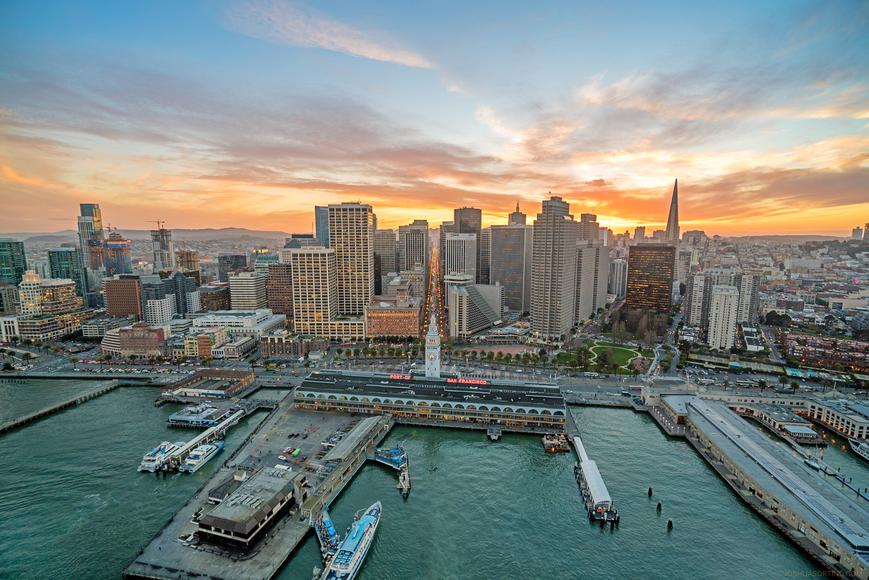
There's some hidden history in S.F.'s famous buildings and streets. Here are the San Francisco stories you don't know yet.
It’s hard to believe that San Francisco didn’t exist 300 years ago. The city has managed to become an iconic place in such a short amount of time. As one of the most coveted destinations in the world, the City by the Bay has greatly influenced the history and development of the Golden State. Take a peek into San Francisco’s past to see how the Spanish mission and pueblo transformed into a cosmopolitan metropolis in fewer than three centuries. We bet you haven’t heard many of these stories about the history of S.F.
When reading about the history of San Francisco, the first thing you’ll notice is that it wasn’t always known as San Francisco. Fun fact: the original name of the settlement was Yerba Buena, derived from the native aromatic herb of the same name. S.F. was officially established on June 29, 1776, when Spanish colonists founded the Presidio of San Francisco and Mission San Francisco de Asís.
The Presidio of San Francisco is now a park and part of the Golden Gate National Recreation Area. Mission The sixth religious colony established as part of the California mission series was San Francisco de Asís, sometimes called Mission Dolores, and is the oldest building still standing in the city. Named after Saint Francis of Assisi—the Italian-Catholic friar, deacon, mystic, and preacher—both the Presidio and Mission Dolores have an eclectic mix of architecture that has become synonymous with S.F.’s quintessential architectural style.

Does your business rank among the best in California?
nominate a businessLearn more about our selection criteria and vetting process.

The nineteenth century was a time of momentous change for San Francisco. As a first step, in the years leading up to the Mexican-American War (1846–1848), the city achieved Mexican independence from Spain. As one might expect, San Francisco was among the territories ceded to the United States by Mexico in the Treaty of Guadalupe Hidalgo. A gold rush started not long after the battle ended.
James W. Marshall discovered gold at Sutter’s Mill on January 21, 1948, which drove 300,000 people to come to California. Many of the gold miners were Chinese; unfortunately, the Chinese gold miners endured many hardships and experienced violent racism from local miners who directed their frustration at them. Before long, historical San Francisco became the largest city on the West Coast thanks to the incredible growth it experienced during the Gold Rush. S.F. went from having 200 residents in 1846 to 36,000 by 1852.
In 1873, a clothing revolution began in the Golden State when S.F. entrepreneur Levi Strauss and tailor Jacob Davis invented blue jeans. The same year, the San Francisco cable car system was created—the world’s last manually operated system of its kind. San Francisco in the 1800s also saw the birth of a landmark, the Ferry Building, which debuted in 1898.
Many iconic S.F. neighborhoods—including the Western Addition, Haight-Ashbury, Eureka Valley, and Mission District—were also created towards the end of the century.
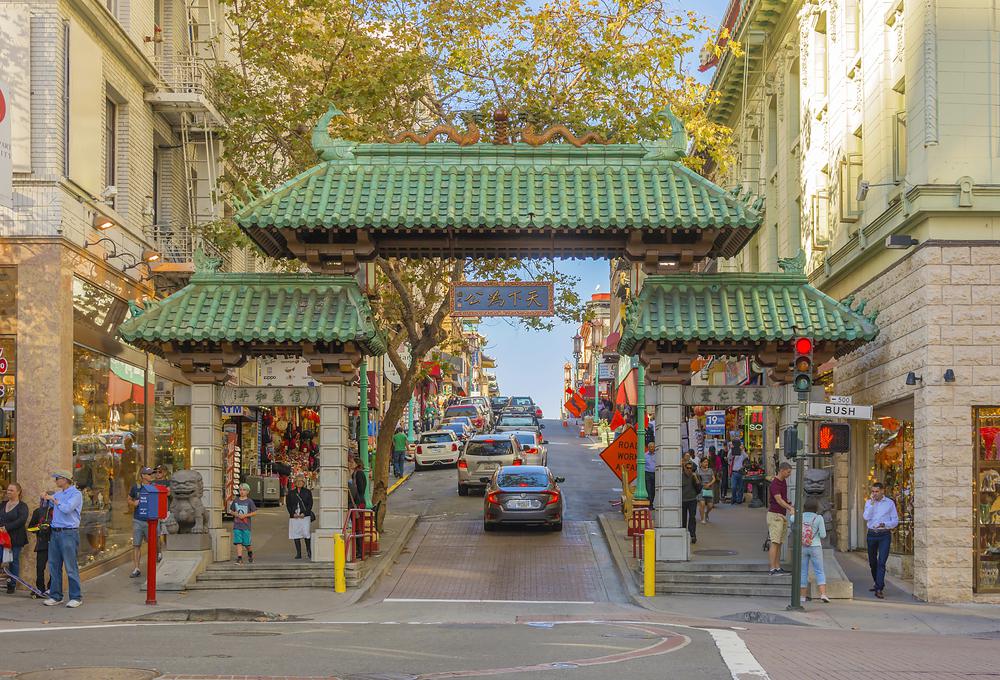
The oldest Chinatown in California is in San Francisco. Chinatown San Francisco’s history doesn’t exactly start off as a happy tale, though. Many Chinese people came to S.F. hoping to make it big during the California Gold Rush, and at least 20,000 Chinese immigrants arrived in the city in 1852. Most of them found jobs working for the Central Pacific and Transcontinental Railroads.
Life wasn’t easy for Chinese people in San Francisco. Allowed to enter the country only as laborers, Chinese workers faced racism and violence on a daily basis. There were a number of racist and restrictive laws dictating where Chinese people were allowed to live within the city; this led to the establishment of Chinatown in San Francisco.
The 1882 Chinese Exclusion Act made living in S.F. even more difficult. Chinese people weren’t allowed to enter the country and obtain U.S. citizenship. Moreover, they weren’t allowed to marry outside their race. Due to the Chinese Exclusion Act, immigration came to a halt.
After the 1906 San Francisco Earthquake, the constant fires, and the plague, it seemed like Chinatown would never recover. However, many took advantage of the situation due to the loss of the city’s birth and immigration records and claimed citizenship. With the repeal of the Chinese Exclusion Act in 1943, Chinatown San Francisco had an opportunity for a fresh start. The Republic of China presented the Dragon Gate as a gift in 1969—the dragon is now located at the entrance of Chinatown.
Today, S.F.’s Chinatown spans 24 blocks and is one of the most visited Chinatowns not just in California, but in all of the U.S. The must-see district is also one of the best places to start an Airbnb—you’re immediately engulfed in the district’s rich history and cultural significance.
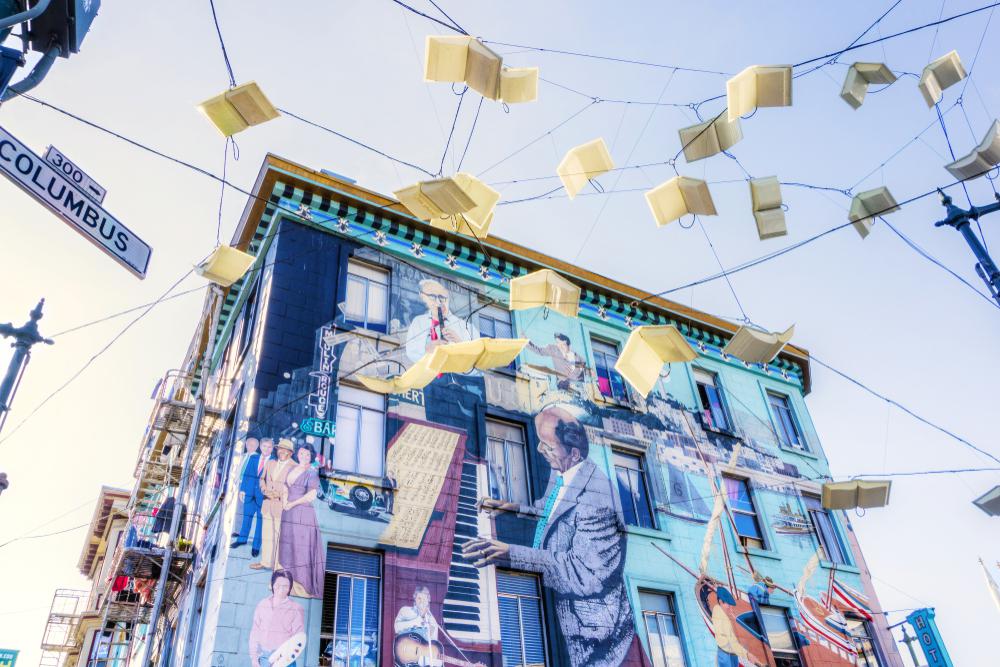
San Francisco in the 1900s was known as the "Paris of the West" and was transforming into a major city. Unfortunately, the unexpected happened: A devastating earthquake struck the City by the Bay and the coast of Northern California on April 18, 1906. The earthquake had a magnitude of 7.9 and caused over 3,000 deaths. San Francisco had developed so quickly in such a short amount of time, but in an instant, more than 80 percent of the city was destroyed.
The 1906 San Francisco Earthquake wasn’t the only tragedy. Many fires broke out following the natural disaster and burned out of control for several days. A mass evacuation across the Bay Area took place to save thousands of lives—residents were trapped between the water and the fire that quickly burned its way towards them. It’s estimated that the property losses from the disaster exceeded $400 million; when adjusted for inflation, that’s the equivalent of about $11.5 billion dollars today.
The city wasted no time in rebuilding. With replanning and reconstruction works in progress, S.F. once again became a vibrant place. Less than a decade after the earthquake, San Francisco hosted the Panama–Pacific International Exposition on a 636-acre site from February 20 to December 4, 1915. All of the grand buildings of the exposition were destroyed, except for the Palace of Fine Arts—it is the only surviving structure of the Panama–Pacific International Exposition.
In the 1920s, San Francisco was quite dapper. Multiple iconic landmarks were built such as the Golden Gate Theatre, Castro Theatre, and Fleishhacker Pool. In 1933, the Bay Bridge was opened, and merely four years later, the Golden Gate Bridge—the most photographed bridge in the world—was completed. Also during these times, the mysterious Alcatraz Island served as a federal prison, where the most notorious criminals in U.S. history—including Al Capone, George “Machine Gun” Kelly, and Mickey Cohen—did time.
Before long, the city became the center of the Beat Generation. City Lights Bookstore, located in North Beach, published Beat Generation literature in the 1950s—a crucial point in North Beach’s history. This led to the San Francisco Renaissance, a phenomenon where 1950s American avant-garde poets used the City by the Bay as a global hub for poetic activities.

Since San Francisco became a magnet for American counterculture, it was where thousands of young people gathered for the iconic Summer of Love—a rejection of the comfortable individualistic modern life and a celebration of art, love, and community instead. The revolutionary hippie movement transformed San Francisco as well as the youth around the country.
In the 1960s, San Francisco also became known for its influential rock music culture. The Grateful Dead, Jefferson Airplane, Sly and the Family Stone, and Creedence Clearwater Revival are just a few of the many S.F. rock bands that achieved international prominence. This counterculture community was often referred to as the "San Francisco sound."
By this time, the City by the Bay was world-renowned for its wild and free spirit. Many LGBTQ+ community members headed to San Francisco because of its gay-friendly and progressive reputation. The Castro District was everyone’s go-to place—the area earned the nickname the “Gay Capital of the World,” “Gay Mecca,” and the “Original ‘Gay-Friendly’ City.”
San Francisco’s Black History
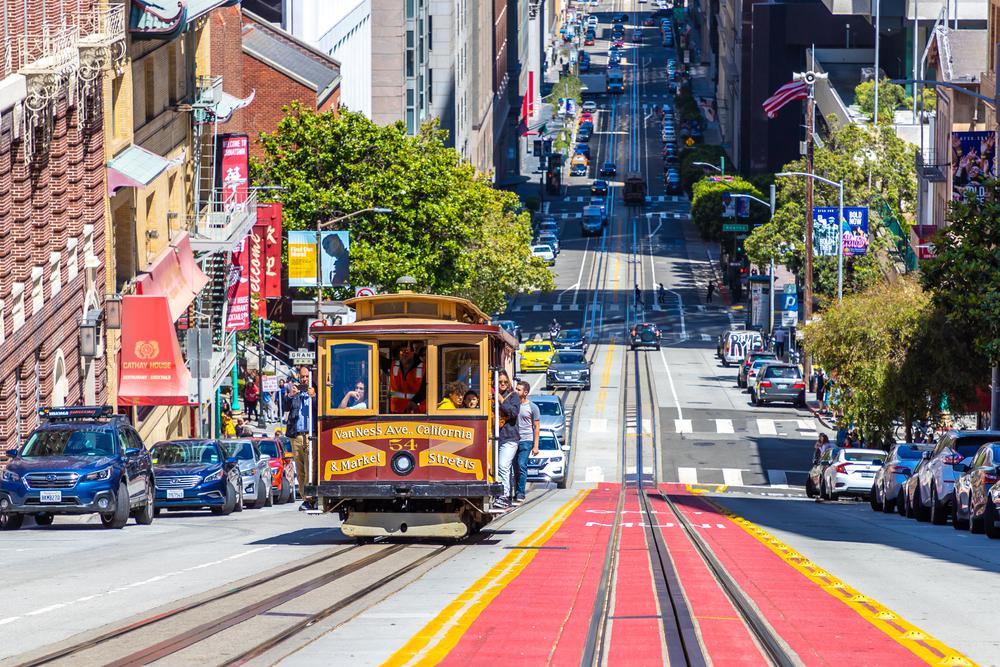
San Francisco’s Black history begins during the Gold Rush when Blacks came to the Bay Area seeking job opportunities. But the Black population remained rather small in the city; it wasn’t until after World War II that the Black population grew in S.F. From World War II to the 1970s—during the Second Great Migration—over five million Blacks migrated to San Francisco. Due to the large influx of Blacks, there was a lot of racial tension and they were forced to live in specific S.F. neighborhoods.
Many Black people contributed to the jazz culture of the Fillmore District. Thanks to Black musicians—such as Billie Holiday, Louis Armstrong, Chet Baker, and Charlie Parker—performing at Jimbo’s Bop City and other jazz clubs, the music scene flourished and became another incentive for Black people to move to San Francisco. By the 1970s, the city's Black population was 13 percent.
On January 8, 1996, Willie Brown became San Francisco’s first African-American mayor. The history of S.F. continues being written—the city’s 45th mayor, London Breed, became the first Black woman to hold the office after being sworn in on July 11, 2018. (Maya Angelou, who became the first black female streetcar conductor in San Francisco at the age of 16, would be proud of these influential Black Californians who helped shape the state.)

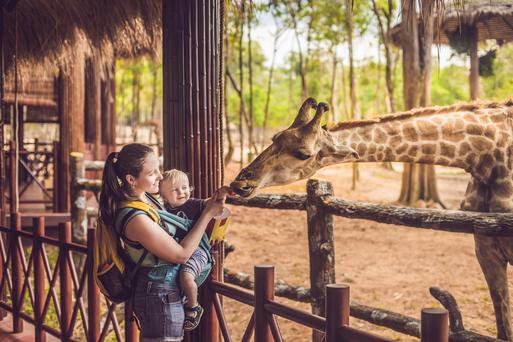
While every zoo in the Golden State is worth visiting, there are a few must-sees that rise above the rest. Here are our favorites in NorCal.
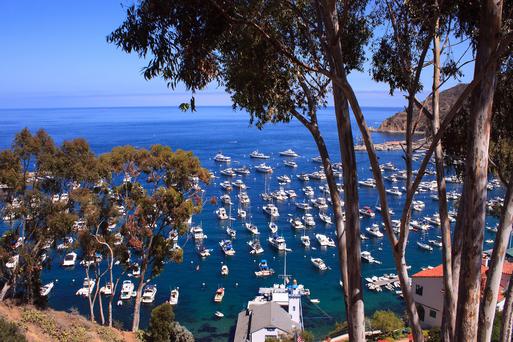
Enjoy the weekend by taking one of these marvelous day trips from San Diego, perfect for a quick getaway from home.
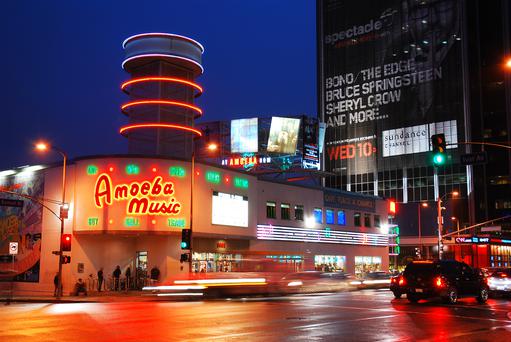
Bolster your collection or discover some new tunes, California record stores are legendary and influential throughout the industry.
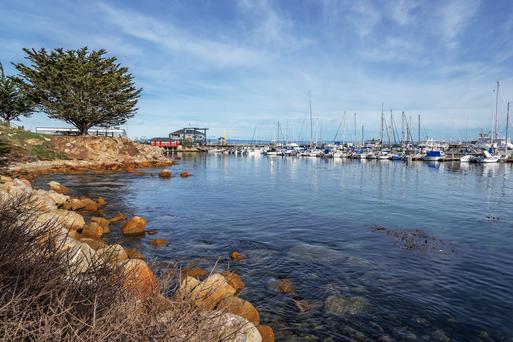
Explore the top California wildlife sanctuaries, home to diverse ecosystems & incredible species, perfect for nature enthusiasts.

